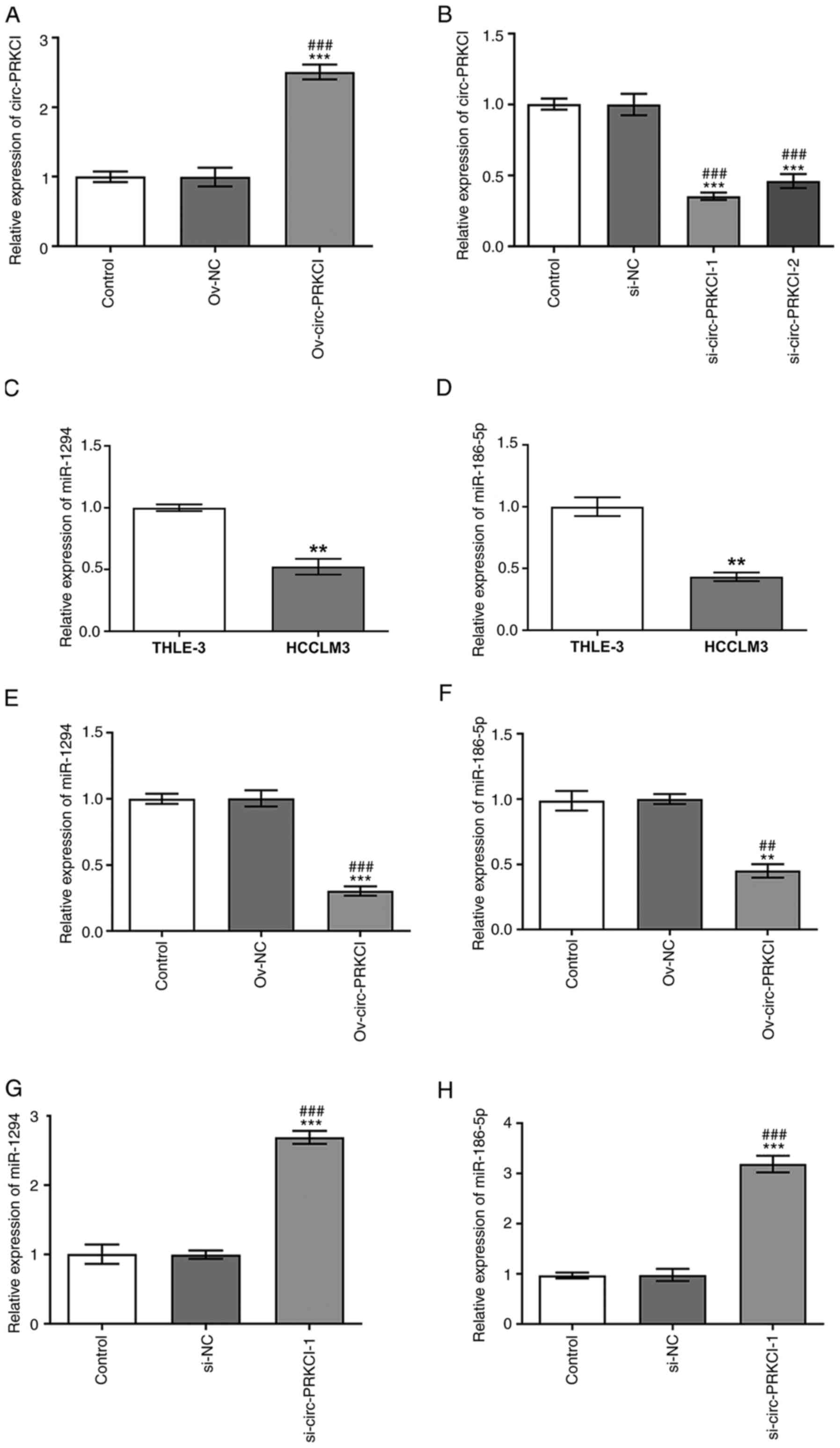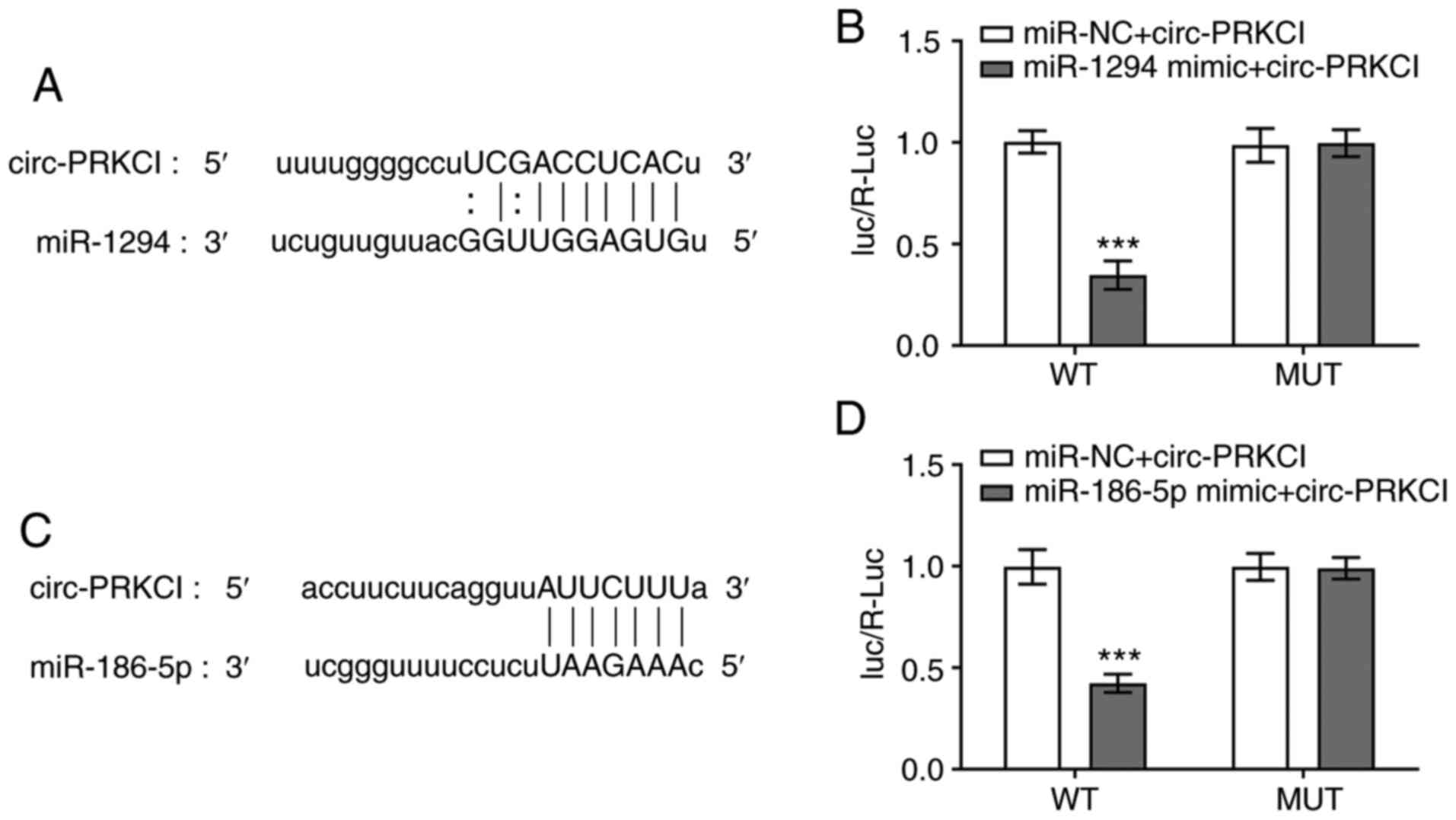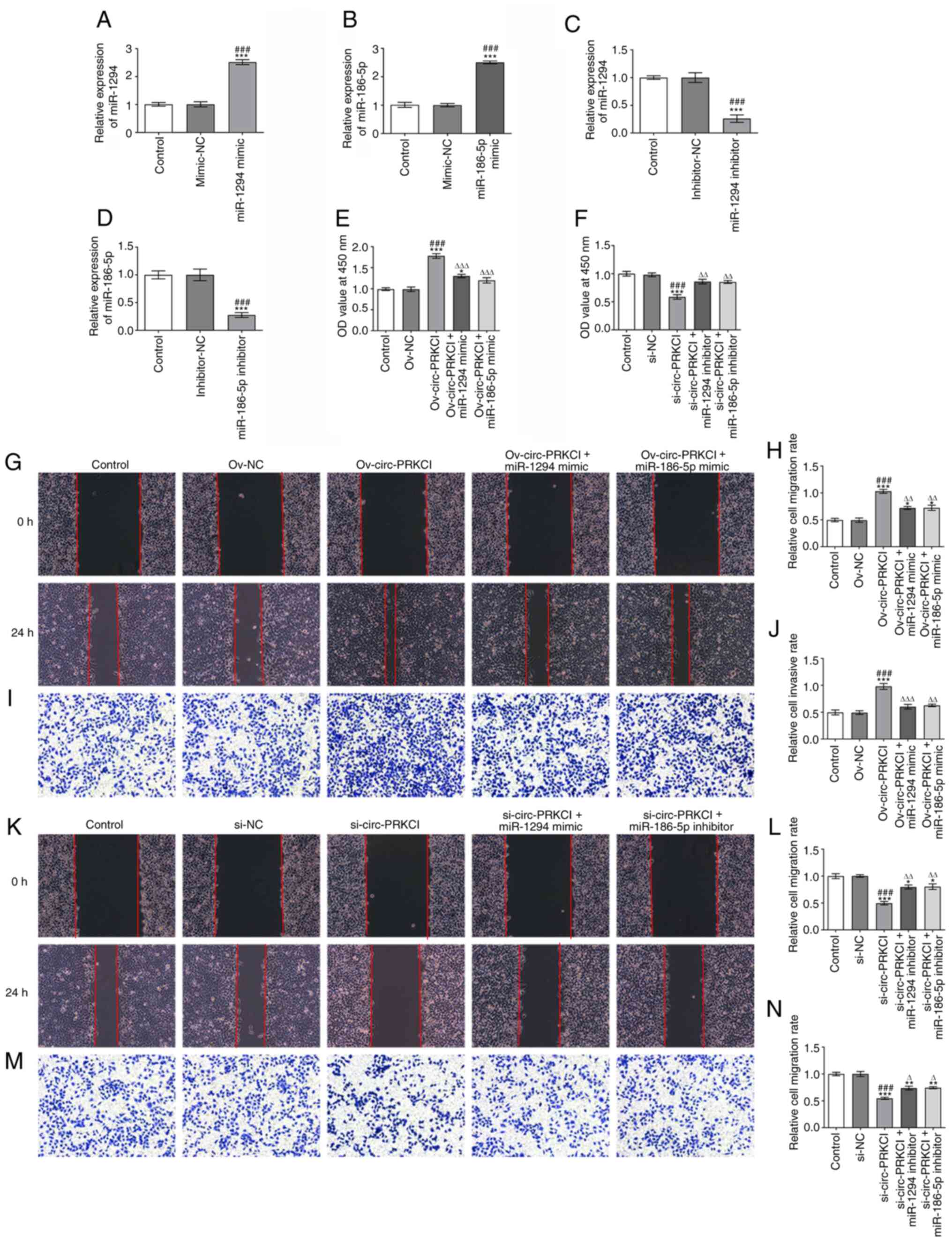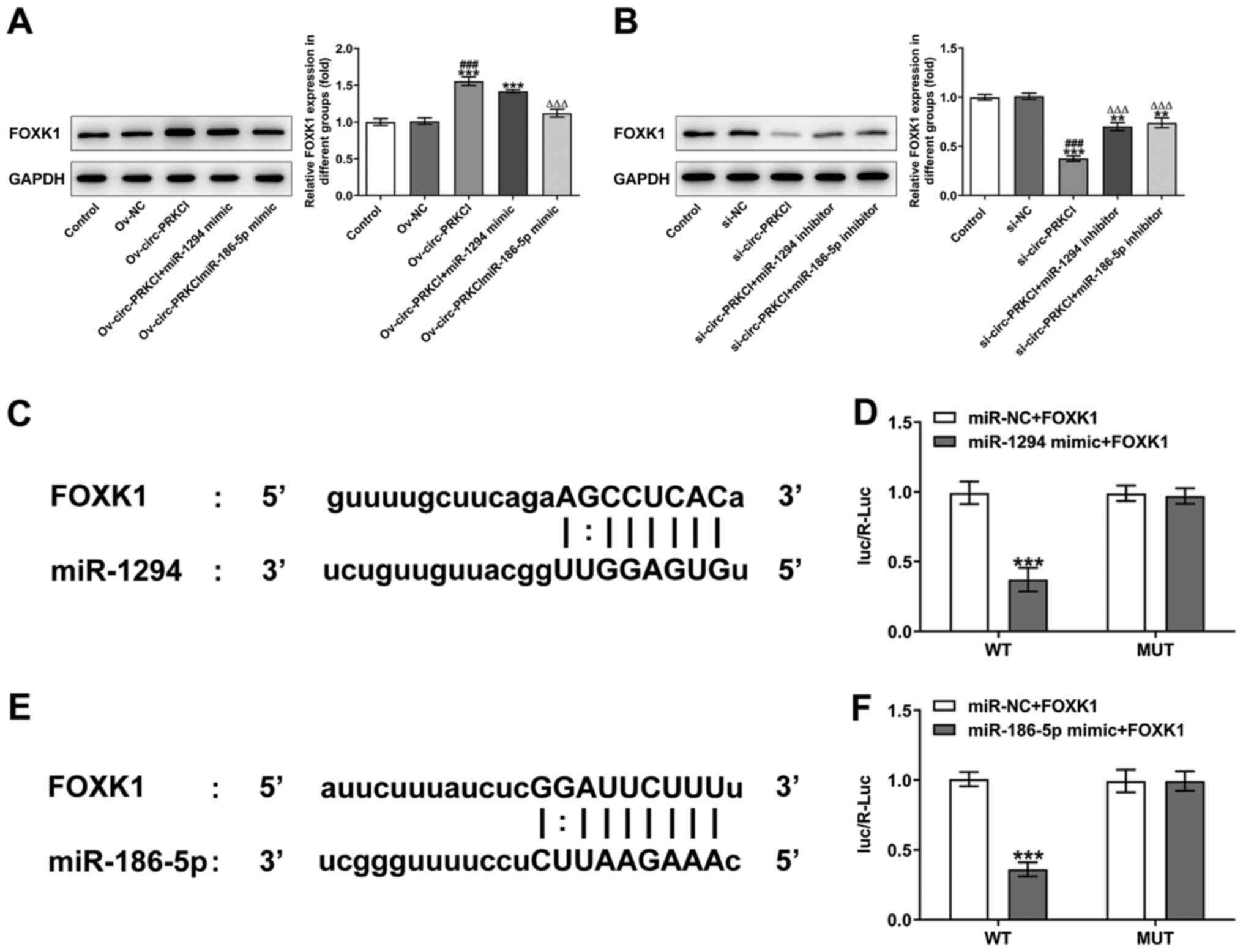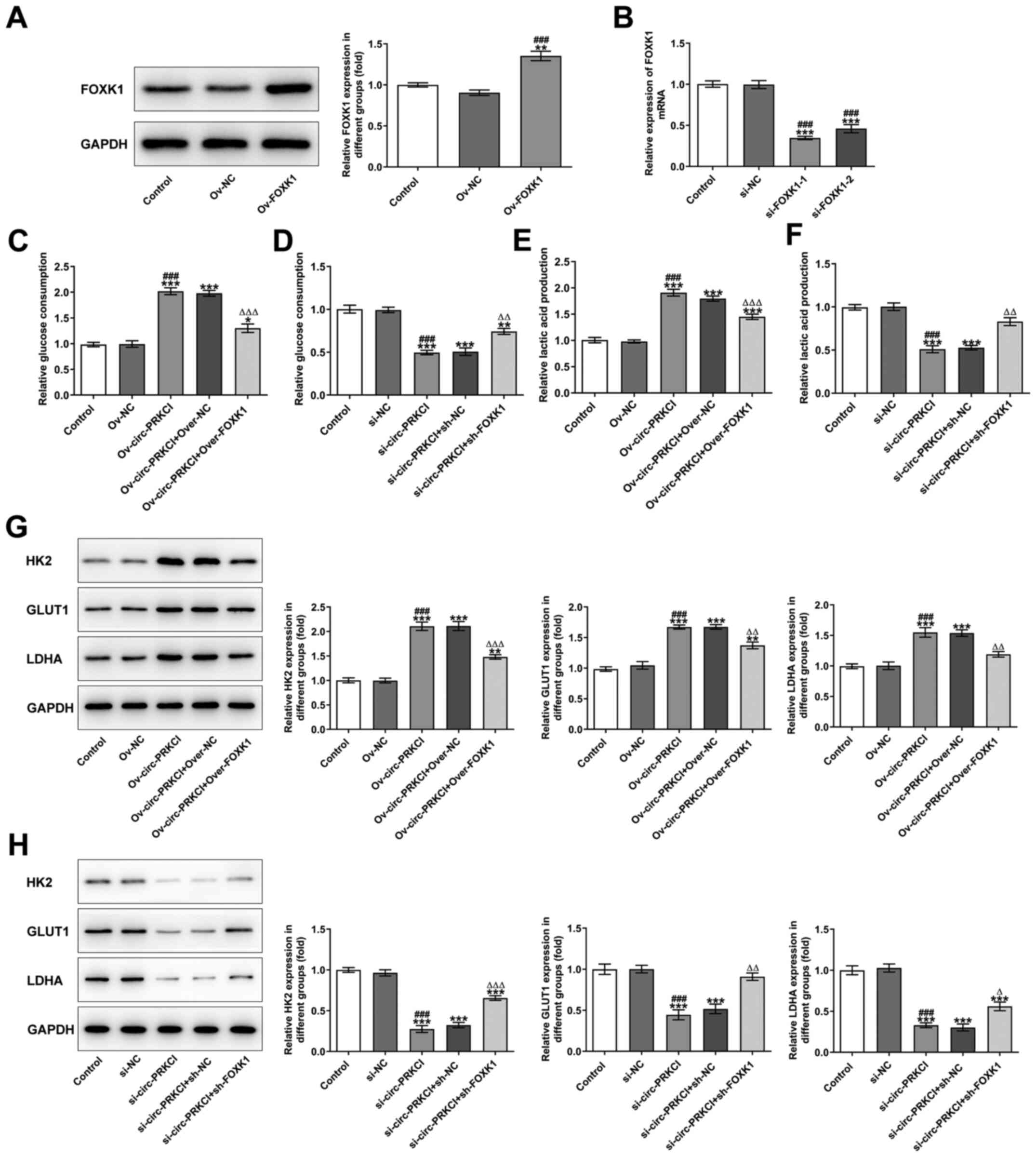|
1
|
Forner A, Reig M and Bruix J:
Hepatocellular carcinoma. Lancet. 391:1301–1314. 2018. View Article : Google Scholar : PubMed/NCBI
|
|
2
|
Chen W, Zheng R, Baade PD, Zhang S, Zeng
H, Bray F, Jemal A, Yu XQ and He J: Cancer statistics in China,
2015. CA Cancer J Clin. 66:115–132. 2016. View Article : Google Scholar : PubMed/NCBI
|
|
3
|
Gingold JA, Zhu D, Lee DF, Kaseb A and
Chen J: Genomic profiling and metabolic homeostasis in primary
liver cancers. Trends Mol Med. 24:395–411. 2018. View Article : Google Scholar : PubMed/NCBI
|
|
4
|
Invenizzi F, Iavarone M, Donato MF,
Mazzucco A, Torre M, Conforti S, Rimessi A, Zavaglia C, Schiavon M,
Comacchio G, et al: Pulmonary resection for metastasis of
hepatocellular carcinoma recurring after liver transplant: An
Italian multicenter experience. Front Oncol. 10:3812020. View Article : Google Scholar : PubMed/NCBI
|
|
5
|
Wei CY, Chen PC, Chau GY, Lee RC, Chen PH,
Huo TI, Huang YH, Su YH, Hou MC, Wu JC, et al: Comparison of
prognosis between surgical resection and transarterial
chemoembolization for patients with solitary huge hepatocellular
carcinoma. Ann Transl Med. 8:2382020. View Article : Google Scholar : PubMed/NCBI
|
|
6
|
Jeck WR, Sorrentino JA, Wang K, Slevin MK,
Burd CE, Liu J, Marzluff WF and Sharpless NE: Circular RNAs are
abundant, conserved, and associated with ALU repeats. RNA.
19:141–157. 2013. View Article : Google Scholar : PubMed/NCBI
|
|
7
|
Wu L, Li Y, Xu XM and Zhu X: Circular RNA
circ-PRKCI promotes cell proliferation and invasion by binding to
microRNA-545 in gastric cancer. Eur Rev Med Pharmacol Sci.
23:9418–9426. 2019.PubMed/NCBI
|
|
8
|
Shi N, Shan B, Gu B, Song Y, Chu H and
Qian L: Circular RNA circ-PRKCI functions as a competitive
endogenous RNA to regulate AKT3 expression by sponging miR-3680-3p
in esophageal squamous cell carcinoma. J Cell Biochem.
120:10021–10030. 2019. View Article : Google Scholar : PubMed/NCBI
|
|
9
|
Qi SX, Sun H, Liu H, Yu J, Jiang ZY and
Yan P: Role and mechanism of circ-PRKCI in hepatocellular
carcinoma. World J Gastroenterol. 25:1964–1974. 2019. View Article : Google Scholar : PubMed/NCBI
|
|
10
|
Cai X, Yu L, Chen Z, Ye F, Ren Z and Jin
P: Arsenic trioxide-induced upregulation of miR-1294 suppresses
tumor growth in hepatocellular carcinoma by targeting TEAD1 and
PIM1. Cancer Biomark. 28:221–230. 2020. View Article : Google Scholar : PubMed/NCBI
|
|
11
|
Shan Y and Li P: Long intergenic
non-protein coding RNA 665 regulates viability, apoptosis, and
autophagy via the MiR-186-5p/MAP4K3 axis in hepatocellular
carcinoma. Yonsei Med J. 60:842–853. 2019. View Article : Google Scholar : PubMed/NCBI
|
|
12
|
Lan T, Yan X, Li Z, Xu X, Mao Q, Ma W,
Hong Z, Chen X and Yuan Y: Long non-coding RNA PVT1 serves as a
competing endogenous RNA for miR-186-5p to promote the
tumorigenesis and metastasis of hepatocellular carcinoma. Tumour
Biol. 39:10104283177053382017. View Article : Google Scholar : PubMed/NCBI
|
|
13
|
Wang Y, Liu G, Sun S and Qin J: miR-1294
alleviates epithelial-mesenchymal transition by repressing FOXK1 in
gastric cancer. Genes Genomics. 42:217–224. 2020. View Article : Google Scholar : PubMed/NCBI
|
|
14
|
Zhang Z, Zhang W, Mao J, Xu Z and Fan M:
miR-186-5p functions as a tumor suppressor in human osteosarcoma by
targeting FOXK1. Cell Physiol Biochem. 52:553–564. 2019. View Article : Google Scholar : PubMed/NCBI
|
|
15
|
Cui H, Gao Q, Zhang L, Han F and Wang L:
Knockdown of FOXK1 suppresses liver cancer cell viability by
inhibiting glycolysis. Life Sci. 213:66–73. 2018. View Article : Google Scholar : PubMed/NCBI
|
|
16
|
Livak KJ and Schmittgen TD: Analysis of
relative gene expression data using real-time quantitative PCR and
the 2(-Delta Delta C(T)) Method. Methods. 25:402–408. 2001.
View Article : Google Scholar : PubMed/NCBI
|
|
17
|
Kawauchi K, Araki K, Tobiume K and Tanaka
N: p53 regulates glucose metabolism through an IKK-NF-kappaB
pathway and inhibits cell transformation. Nat Cell Biol.
10:611–618. 2008. View
Article : Google Scholar : PubMed/NCBI
|
|
18
|
Shi D, Zhao D, Niu P, Zhu Y, Zhou J and
Chen H: Glycolysis inhibition via mTOR suppression is a key step in
cardamonin-induced autophagy in SKOV3 cells. BMC Complement Altern
Med. 18:3172018. View Article : Google Scholar : PubMed/NCBI
|
|
19
|
Gillies RJ and Gatenby RA: Hypoxia and
adaptive landscapes in the evolution of carcinogenesis. Cancer
Metastasis Rev. 26:311–317. 2007. View Article : Google Scholar : PubMed/NCBI
|
|
20
|
Ding Z, Yang L, Xie X, Xie F, Pan F, Li J,
He J and Liang H: Expression and significance of hypoxia-inducible
factor-1 alpha and MDR1/P-glycoprotein in human colon carcinoma
tissue and cells. J Cancer Res Clin Oncol. 136:1697–1707. 2010.
View Article : Google Scholar : PubMed/NCBI
|
|
21
|
Liberti MV and Locasale JW: The Warburg
effect: How does it benefit cancer cells? Trends Biochem Sci.
41:211–218. 2016. View Article : Google Scholar : PubMed/NCBI
|
|
22
|
Benjamin DI, Cravatt BF and Nomura DK:
Global profiling strategies for mapping dysregulated metabolic
pathways in cancer. Cell Metab. 16:565–577. 2012. View Article : Google Scholar : PubMed/NCBI
|
|
23
|
Orang AV, Petersen J, McKinnon RA and
Michael MZ: Micromanaging aerobic respiration and glycolysis in
cancer cells. Mol Metab. 23:98–126. 2019. View Article : Google Scholar : PubMed/NCBI
|
|
24
|
Guo W, Qiu Z, Wang Z, Wang Q, Tan N, Chen
T, Chen Z, Huang S, Gu J, Li J, et al: MiR-199a-5p is negatively
associated with malignancies and regulates glycolysis and lactate
production by targeting hexokinase 2 in liver cancer. Hepatology.
62:1132–1144. 2015. View Article : Google Scholar : PubMed/NCBI
|
|
25
|
Iansante V, Choy PM, Fung SW, Liu Y, Chai
JG, Dyson J, Del Rio A, D'Santos C, Williams R, Chokshi S, et al:
PARP14 promotes the Warburg effect in hepatocellular carcinoma by
inhibiting JNK1-dependent PKM2 phosphorylation and activation. Nat
Commun. 6:78822015. View Article : Google Scholar : PubMed/NCBI
|
|
26
|
Liang Y, Zhang D, Zheng T, Yang G, Wang J,
Meng F, Liu Y, Zhang G, Zhang L, Han J, et al: lncRNA-SOX2OT
promotes hepatocellular carcinoma invasion and metastasis through
miR-122-5p-mediated activation of PKM2. Oncogenesis. 9:542020.
View Article : Google Scholar : PubMed/NCBI
|
|
27
|
Xiao Q, Wei Z, Li Y, Zhou X, Chen J, Wang
T, Shao G, Zhang M and Zhang Z: miR-186 functions as a tumor
suppressor in osteosarcoma cells by suppressing the malignant
phenotype and aerobic glycolysis. Oncol Rep. 39:2703–2710.
2018.PubMed/NCBI
|
|
28
|
Liu Y, Jiang Y, Xu L, Qu C, Zhang L, Xiao
X, Chen W, Li K, Liang Q and Wu H: circ-NRIP1 promotes glycolysis
and tumor progression by regulating miR-186-5p/MYH9 axis in gastric
cancer. Cancer Manag Res. 12:5945–5956. 2020. View Article : Google Scholar : PubMed/NCBI
|
|
29
|
Sukonina V, Ma H, Zhang W, Bartesaghi S,
Subhash S, Heglind M, Foyn H, Betz MJ, Nilsson D, Lidell ME, et al:
FOXK1 and FOXK2 regulate aerobic glycolysis. Nature. 566:279–283.
2019. View Article : Google Scholar : PubMed/NCBI
|
|
30
|
Zhang Z, Lin W, Gao L, Chen K, Yang C,
Zhuang L, Peng S, Kang M and Lin J: Hsa_circ_0004370 promotes
esophageal cancer progression through miR-1294/LASP1 pathway.
Biosci Rep. 39:BSR201823772019. View Article : Google Scholar : PubMed/NCBI
|
|
31
|
Guo TY, Xu HY, Chen WJ, Wu MX and Dai X:
Downregulation of miR-1294 associates with prognosis and tumor
progression in epithelial ovarian cancer. Eur Rev Med Pharmacol
Sci. 22:7646–7652. 2018.PubMed/NCBI
|
|
32
|
Kan XQ, Li YB, He B, Cheng S, Wei Y and
Sun J: MiR-1294 acts as a tumor inhibitor in cervical cancer by
regulating FLOT1 expression. J Biol Regul Homeost Agents. Apr
24–2020.(Epub ahead of print).
|















